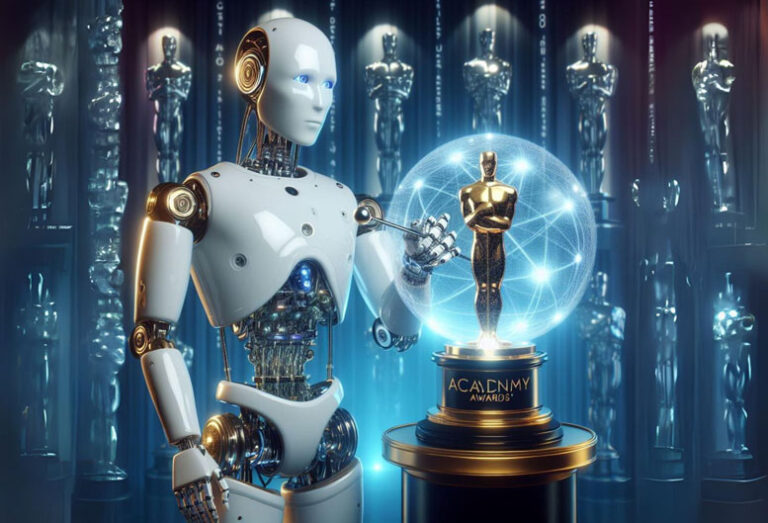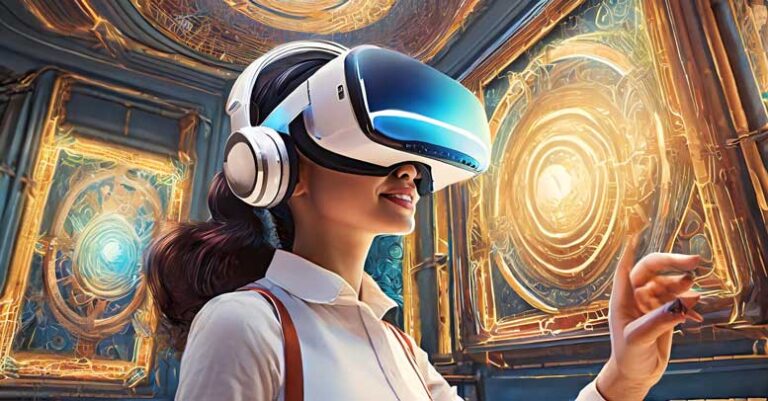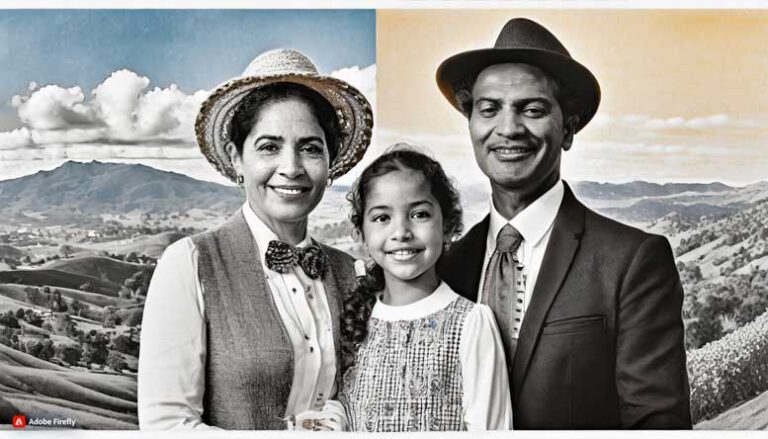AI Art Generators: Everything you need to know
Table of Contents
AI Art Generators are powerful tools wielding artificial intelligence to create unique and captivating visuals.
Unlike static filters or basic editing software, these platforms harness the power of machine learning to translate textual descriptions, reference images, and artistic styles into stunning pieces of art.
This article delves into the intriguing world of AI Art Generators, exploring their inner workings, potential impact, and future trajectory.
By the end, you’ll gain a comprehensive understanding of these tools and their fascinating role in shaping the landscape of art and creativity.
What is an AI Art Generator?
An AI Art Generator is a software platform or online tool that utilizes artificial intelligence to create original artwork based on user input.
Imagine describing a whimsical forest bathed in the golden light of dawn, or uploading a photo of your pet and requesting a Van Gogh-inspired portrait.
These tools can translate such prompts and references into intricate paintings, abstract designs, or even realistic renditions, opening doors to previously unimaginable artistic expressions.
While some platforms focus on specific styles or mediums, others offer a versatile range.
Whether you crave photorealistic portraits, surreal landscapes, or whimsical pixel art, there’s likely an AI Art Generator catering to your vision.
The Magic Behind the Machine: How Do AI Art Generators Work?
The creative magic of AI Art Generators lies in their underlying technology, primarily machine learning and deep learning.
These tools are trained on massive datasets of existing artwork, learning to identify patterns, styles, and relationships between visual elements and their respective descriptions or attributes.
During the generation process, several steps unfold:
- User Input: You provide a textual description, upload reference images, or choose stylistic preferences.
- Understanding: The AI parses and analyzes your input, extracting key elements like colors, shapes, objects, and overall style.
- Generation: Utilizing its learnings, the AI generates a pixel representation or vector graphic based on the analyzed input.
- Refinement: Iterative improvements occur, with the AI fine-tuning the artwork based on feedback (if supported by the platform) or its internal algorithms.
The complexity of these processes varies depending on the specific tool. Some generate basic sketches, while others produce intricate, high-resolution artworks with incredible detail.
Some Examples of AI Art Generators
To truly appreciate the capabilities of AI Art Generators, let’s explore some real-world examples:
- Midjourney: This platform allows for incredibly detailed and diverse artwork creation, catering to various artistic styles and user preferences.
- DALL-E 2: Known for its photorealistic outputs, DALL-E 2 allows for combining elements from different images or generating scenes based on detailed descriptions.
- NightCafe Creator: Offering various artistic styles and creative filters, NightCafe Creator caters to beginners and experienced users alike.
- Artbreeder: This platform focuses on exploring and hybridizing different styles and artistic movements, leading to unique and visually captivating results.
- GauGAN2: Developed by NVIDIA, GauGAN2 allows for transforming simple sketches into realistic landscapes. It is now available as a desktop application, called NVIDIA Canvas.
These are just a few examples; the landscape of AI Art Generators is constantly evolving, with new tools and features emerging frequently.
AI Art Generator or AI Image Generator: What’s the difference?
While both terms might sound similar, AI Art Generators and AI Image Generators have nuanced differences.
Art Generators delve deeper, using textual descriptions to conjure entirely new visuals like a digital artist interpreting your creative prompt.
On the other hand, Image Generators often focus on manipulating or transforming existing images, like adding filters, applying styles, or even colorizing black and white photos.
Think of Art Generators as visionary, creating from scratch, while Image Generators paint new layers on existing visual canvases.
Impact on Society
The rise of AI Art Generators presents a significant impact on society, influencing different aspects like:
- Accessibility: These tools democratize art creation, allowing anyone with an idea and basic digital skills to generate personalized art, regardless of experience.
- Creative Exploration: Experimenting with various styles and mediums becomes easier, fostering innovative artistic expressions and pushing creative boundaries.
- Commercial Applications: From marketing materials to game design, AI art finds applications in various industries, offering unique aesthetics and design possibilities.
- Art Education: These tools can enhance art education by providing interactive learning experiences and encouraging exploration of different artistic styles.
However, concerns also arise:
- Job Displacement: With automation reaching the art world, fears of job displacement for artists and designers emerge, necessitating adaptation and skills diversification.
- Originality and Ownership: Questions regarding the intellectual property and originality of AI-generated art need to be addressed.
- Bias and Representation: Training data biases can be reflected in the generated art, requiring careful data curation and responsible development practices.
Ethical Considerations
As with any powerful technology, responsible development and ethical considerations are crucial for AI Art Generators. Here are some key points:
- Transparency and User Education: Users should be aware of the technology’s limitations and potential biases, ensuring informed and responsible usage.
- Data Curation and Bias Mitigation: Training data should be diverse and inclusive to avoid perpetuating harmful stereotypes or generating biased outputs.
- Ownership and Copyright: Clear guidelines on ownership and copyright of AI-generated art
Future of AI Art Generators
The future of AI Art Generators is brimming with possibilities. Here are some exciting prospects:
- Advanced Personalization: Imagine tools tailoring art to your individual preferences, learning your favorite styles and themes to create truly personalized masterpieces.
- Real-time Feedback and Iteration: Interactive platforms where users can provide real-time feedback and witness the AI refine the artwork based on their input, enabling a collaborative creative process.
- Integration with Other AI Tools: Seamless integration with other AI tools like music generators or 3D modeling software, leading to the creation of multimedia experiences or immersive art installations.
- Democratization of Art Appreciation: AI-powered tools could analyze existing artwork and generate explanations or interpretations, making art more accessible and enjoyable for a wider audience.
- Symbiotic Relationship with Human Artists: Envision a future where humans and AI collaborate seamlessly, with AI tools assisting artists in creative processes, generating variations, or tackling repetitive tasks, allowing artists to focus on their unique vision and expression.
However, addressing ethical concerns remains crucial.
Continuous dialogue and collaboration between developers, artists, policymakers, and users will ensure responsible development and harness the power of AI Art Generators for the benefit of creativity, expression, and accessibility.
In conclusion, AI Art Generators represent a paradigm shift in the world of art, opening doors to unprecedented creative possibilities.
While their impact on society raises important questions, responsible development and a focus on human-AI collaboration can ensure these tools benefit art, artists, and the appreciation of beauty for generations to come.
AI Art Generators FAQs
What are the benefits of using AI Art Generators?
- Accessibility: No artistic experience needed, open to all with creative ideas.
- Creative Exploration: Experiment with diverse styles, mediums, and artistic movements freely.
- Speed and Efficiency: Generate numerous options quickly, saving time and effort.
- Personalized Expression: Craft unique artwork tailored to your specific vision and preferences.
Are AI-generated artworks considered “real” art?
This is a complex question with no definitive answer. While AI tools create original visuals based on complex algorithms, they lack the human element of intention, emotion, and personal expression often associated with traditional art. However, the lines are blurring, and the definition of art itself is evolving.
Do I need to be an artist to use AI Art Generators?
Absolutely not! These tools are user-friendly and require no prior artistic experience. Simply provide your ideas, choose desired styles, and let the AI do its magic.
Can AI Art Generators replace human artists?
While AI tools can create impressive visuals, they lack the unique human touch, perspective, and emotional depth that often defines art. The future likely holds a collaborative space where humans and AI work together, with AI assisting in creation and exploration while artists utilize their unique vision and expertise.
Can I sell AI-generated art?
The legal landscape surrounding ownership and copyright of AI-generated art is still evolving. While some platforms grant specific usage rights, it’s crucial to check the platform’s terms and consult legal advice for commercial use.
What are some popular free AI Art Generators?
While many AI Art Generators offer paid subscriptions for advanced features, several free options allow you to explore the technology. Some popular choices include:
- NightCafe Creator: Offers basic generation with limited styles and resolution, but allows experimenting with various filters and prompts.
- Dream by WOMBO: Focuses on abstract, dreamlike art pieces, perfect for exploring unique and surreal styles.
- Craiyon (formerly DALL-E mini): Generates simple sketches based on textual descriptions, ideal for quick idea exploration and brainstorming.
- GauGAN2: Lets you transform simple sketches into realistic landscapes, offering a glimpse into the power of advanced AI models.
Are there any AI Art Generators specifically for photography?
Yes, several platforms cater to generating or manipulating photos and portraits. Here are a few examples:
- Imagen: Google AI’s tool allows for detailed control over image generation, including realistic portraits with specific characteristics and poses.
- StarryAI: Focuses on artistic photo manipulations, transforming portraits into paintings, sculptures, or other creative renditions.
- Remini: Enhances the quality of old or blurry photos, bringing them to life with AI-powered restoration and upscaling.
Where can I learn more about AI Art Generators and improve my skills?
The online community surrounding AI art is vibrant and helpful. Here are some resources to continue your journey:
- Midjourney Discord: An active community of Midjourney users sharing creations, tips, and discussions.
- Artbreeder subreddit: A forum for discussing Artbreeder and exploring creative prompts and techniques.
- AI Art Courses on Skillshare/Udemy: Online courses covering different AI Art Generators, their functionalities, and creative exploration techniques.
- AI Art YouTube Channels: Many channels showcase different tools, explain workflows, and offer tutorials for aspiring AI artists.






